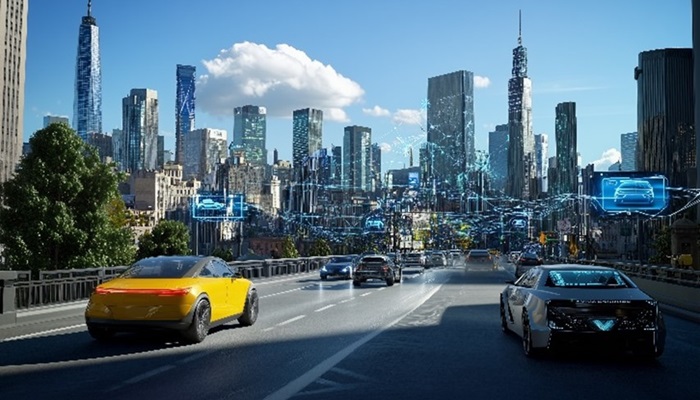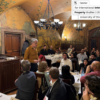Smart Cities and Intellectual Property: Navigating the Legal Landscape of Urban Innovation
In an era of rapid technological advancement, cities around the world are embracing the concept of “smart cities” to enhance urban living, improve efficiency, and address complex challenges. However, as municipalities rush to implement cutting-edge solutions, they must navigate a complex web of intellectual property (IP) issues. A recent paper by Tomasz Szewc and Szymon Rubisz explores the intricate relationship between smart cities and IP, shedding light on the legal considerations that city planners, policymakers, and technology providers must grapple with in this evolving landscape.
Szewc, Tomasz; Rubisz, Szymaon, Intellectual Property Issues in Managing a Smart City, Scientific Papers of Silesian University of Technology – Organization and Management Series, iss. 168, 2023
The Smart City Revolution
Smart cities leverage advanced technologies such as the Internet of Things (IoT), artificial intelligence (AI), and big data analytics to optimize urban infrastructure and services. From intelligent traffic management systems to energy-efficient buildings, these innovations promise to transform the urban experience. However, the implementation of smart city solutions often involves a complex interplay of ideas, technologies, and stakeholders, each with their own IP considerations.
Copyright in the Smart City Context
One of the primary areas of IP that smart cities must contend with is copyright law. As cities develop comprehensive strategies and implementation plans for their smart initiatives, these documents may be protected as literary works under copyright law. While the underlying ideas themselves cannot be copyrighted, the specific expression of these ideas in reports, analyses, and project documentation may be subject to protection.
This raises interesting questions about the ability of cities to share and replicate successful smart city strategies. While one municipality cannot simply copy another’s strategy verbatim, they can certainly draw inspiration from and adapt the underlying concepts to their own needs. This balance between protection and innovation is crucial for fostering the spread of smart city solutions.
Software: The Backbone of Smart Cities
Perhaps the most critical IP consideration for smart cities revolves around software. Computer programs that manage databases, process sensor data, and facilitate communication between various urban systems are the lifeblood of smart city infrastructure. These programs are typically protected under copyright law as literary works.
Cities must carefully consider their approach to software licensing and development. While proprietary software offers certain advantages, it can also lead to vendor lock-in and limit a city’s ability to adapt and expand its systems. Alternatively, open-source solutions provide greater flexibility and potential for collaboration but may raise security concerns.
Software and Patent Protection in Smart Cities: Pioneering Urban Innovation
The development of smart cities relies heavily on advanced software systems, which serve as the backbone of urban transformation. These systems integrate diverse technologies such as IoT, AI, and big data to optimize city infrastructure, improve public services, and enhance residents’ quality of life. However, the innovative nature of these technologies brings intellectual property (IP) considerations to the forefront, particularly regarding software and patent protection.
- The Role of Software in Smart Cities: Smart city software is essential for managing interconnected urban systems. It enables real-time data collection, analysis, and decision-making to improve various aspects of city life, including traffic management, energy efficiency, public safety, and waste collection. These platforms centralize information from numerous sources, allowing city managers to monitor and optimize operations through a single interface. For example:
- Traffic Systems: AI-powered software analyses traffic patterns to reduce congestion and optimize signal timings.
- Energy Management: Smart grids use software to monitor energy consumption and integrate renewable energy sources efficiently.
- Public Services: Applications enable predictive maintenance of infrastructure and facilitate citizen engagement through user-friendly interfaces.
- Patent Protection for Smart City Software: Patents play a critical role in safeguarding the innovations that underpin smart city technologies. While traditional patents often focus on tangible inventions, the rise of software-driven solutions has expanded the scope of patentable subject matter. In many jurisdictions, software-related inventions can be patented if they meet specific criteria such as novelty, non-obviousness, and industrial applicability.
- Key Considerations for Patenting Software in Smart Cities
- Eligibility: To qualify for patent protection, software must demonstrate a technical effect beyond mere data processing or algorithmic calculations. For instance, a novel method for optimizing IoT sensor networks could be patentable if it enhances system efficiency.
- Global Trends: Patent filings in the smart city domain have surged since 2015, with Asia leading the way. Companies like Samsung and Huawei dominate this space by securing patents for IoT devices, AI algorithms, and 5G applications that drive smart city innovations.
- Strategic Patenting: Businesses are encouraged to adopt a layered approach to patenting by protecting individual components (e.g., sensors), system integrations (e.g., communication protocols), and overarching functionalities (e.g., traffic management systems). This strategy ensures comprehensive protection against infringement.
- Challenges in Software Patent Protection
- Legal Ambiguities: The patentability of software varies across jurisdictions. Some countries impose strict limitations on software patents, requiring inventors to demonstrate significant technical contributions.
- Rapid Innovation: The fast pace of technological advancements in smart cities necessitates timely patent filings to secure exclusivity before competitors enter the market.
- Interconnected Systems: Smart city technologies often involve complex integrations of multiple systems. Patenting these interactions can be challenging but is crucial for protecting holistic solutions.
- Balancing Open Innovation and Proprietary Rights
While patents provide exclusivity and encourage investment in R&D, they can also create barriers to collaboration in smart city projects. Open innovation models offer an alternative by fostering knowledge sharing and accelerating technological progress. However, balancing openness with the need to protect proprietary innovations remains a significant challenge. Patent pools and cross-licensing agreements are emerging as effective mechanisms for managing IP in collaborative environments. These arrangements allow stakeholders to share access to critical technologies while safeguarding their core innovations.
Software is at the heart of smart city development, enabling seamless integration of advanced technologies that transform urban living. Patent protection ensures that innovators can safeguard their contributions while encouraging further investment in this dynamic field. However, navigating the complexities of software patenting requires strategic planning and adaptability to evolving legal landscapes.
As cities continue their journey toward becoming smarter and more sustainable, striking a balance between proprietary rights and collaborative innovation will be essential for fostering an ecosystem that benefits all stakeholders — governments, businesses, and citizens alike
Databases: The Fuel of Urban Intelligence
Smart cities generate and rely on vast amounts of data. The legal protection of databases is another crucial aspect of IP in this context. While the data itself may not be protected, the structure and organization of databases can be subject to copyright protection if they demonstrate creativity in their selection or arrangement.
Moreover, cities must grapple with questions of data ownership and usage rights. Clear agreements between municipalities, technology providers, and other stakeholders are essential to define who can access, use, and profit from the valuable data generated by smart city systems.
Industrial Property: Protecting Technical Innovations
As cities implement novel technical solutions to urban challenges, they enter the realm of industrial property law. Inventions that meet the criteria of novelty, inventive step, and industrial applicability may be eligible for patent protection. This is particularly relevant for hardware innovations, such as new types of sensors or connectivity mechanisms.
Interestingly, the paper notes that patenting activity in the smart city space has been on the rise for over a decade, with Asian companies leading the charge. Companies like Huawei, LG, and Samsung are aggressively seeking patent protection for their smart city innovations. This trend highlights the growing commercial importance of smart city technologies and the need for cities to navigate a complex landscape of existing patents when implementing new solutions.
Trademarks: Branding the Smart City
As cities strive to differentiate themselves and attract residents and businesses, many are turning to branding strategies that emphasize their “smart” credentials. This has led to an increase in trademark applications related to smart city initiatives. For example, cities may seek to protect logos or slogans that promote their innovative urban solutions.
While trademarks can be a powerful tool for city branding, they also raise questions about the appropriate balance between public interest and commercial considerations in urban governance.
Balancing Innovation and Protection
One of the key challenges highlighted in the paper is the need to balance the protection of intellectual property with the public interest in improving urban infrastructure and quality of life. Cities must navigate the competing interests of private sector technology providers, who seek to protect their innovations and ensure a return on investment, and the broader public good that smart city solutions aim to serve.
This balancing act requires careful consideration of licensing agreements, collaboration models, and procurement strategies. Cities may need to negotiate complex contracts that ensure access to necessary technologies while also protecting the interests of innovators and encouraging ongoing investment in urban solutions.
The Role of Open Innovation
The paper suggests that open innovation models may play an increasingly important role in smart city development. By embracing open-source technologies and collaborative development approaches, cities can potentially reduce costs, increase flexibility, and foster a more vibrant ecosystem of urban innovation.
However, open innovation is not without its challenges. Cities must carefully consider issues of interoperability, security, and long-term sustainability when adopting open-source solutions. Additionally, they must navigate the complex licensing requirements that often accompany open-source software and ensure compliance with all relevant legal obligations.
Legal Preparedness for Smart City Implementation
As cities embark on their smart transformation journeys, the paper emphasizes the importance of legal preparedness. Municipal leaders and policymakers must develop a thorough understanding of IP law and its implications for smart city initiatives. This includes:
- Developing clear IP policies and guidelines for smart city projects
- Ensuring proper documentation and protection of city-developed innovations
- Conducting thorough IP due diligence when partnering with technology providers
- Negotiating favourable licensing terms that protect the city’s interests
- Exploring alternative models such as open innovation and collaborative development
The Future of IP in Smart Cities
As smart city technologies continue to evolve, so too will the IP landscape surrounding them. The paper suggests that future developments may include:
- Increased focus on data ownership and usage rights
- Growing importance of AI-related IP issues
- Emergence of new IP protection mechanisms tailored to smart city innovations
- Greater emphasis on international cooperation and standardization in smart city IP
Conclusion
The implementation of smart city solutions offers tremendous potential to improve urban life and address pressing challenges. However, as Szewc and Rubisz’s paper clearly demonstrates, navigating the complex world of intellectual property is crucial for the success of these initiatives.
Cities must strike a delicate balance between protecting innovation, ensuring access to vital technologies, and serving the public interest. By developing a nuanced understanding of IP law and its implications for smart city development, urban leaders can create a foundation for sustainable, innovative, and legally sound smart city initiatives.
As we move forward into an increasingly connected and intelligent urban future, the interplay between smart cities and intellectual property will undoubtedly continue to evolve. By staying informed and proactive, cities can harness the power of innovation while navigating the complex legal landscape of the smart city revolution.




